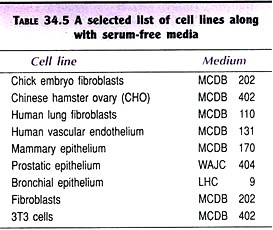ADVERTISEMENTS:
(1) Fungi as food:
Several mushrooms and morels are used as food since time immemorial, Yeast is cultured on large scale which is used in the conversion of carbohydrates and inorganic nitrogen salts into edible and nutritional forms.
Yeast food is rich in several vitamins like, thiamine, riboflavin, nicotinic acid, pantothenic acid and biotin etc.
ADVERTISEMENTS:
Saccharomyces cerevisiae (yeast) is used in the manufacture of milk loaves (bread).
Enzymes secreted by Penicillium roqueforti and penicillium camemberti are used in the preparation of cheese. They also impart characteristic flavour to cheese. The cheese thus produced is very delicious and greatly valued.
(2) Decomposition of Organic Waste and soil Fertility:
The living organisms are highly indebted to the unceasing digestive and respiratory activities of saprophytic fungi and bacteria through which the destruction of organic debris takes place without which all of us would have died of suffocation. In this decomposition large amount of carbon dioxide is released into the atmosphere for accomplishing carbon assimilation. Humus is formed as a result of this decay which is an important soil constituent. Humus increases soil fertility.
ADVERTISEMENTS:
(3) Fungi and nitrogen fixation:
Biological nitrogen is the commonest and the largest cause of soil fertility. It is mainly achieved through symbiotic bacteria present in the root nodules of legumes. A small amount of atmospheric nitrogen is also fixed by non-symbiotic fungi such as Rhodotorula and Saccharomyces. (4) Nutrition of Plants:
(4) Nutrition of Plants:
Members of the Phycomycetes, Ascomycetes, Basidiomycetes and fungi imperfecti are involved in the formation of mycorrhizae which are believed to be of fundamental importance in the nutrition of trees like, Cycas, Zamia, Betula and Monotrapa etc.
(5) Industries:
Several chemical products such as, Gluconic acid, gallic acid, kojic acid, itaconic acid, turmeric acid, lactic acid, oxalic acid, ethyl-alcohol etc., are produced as a result of metabolic activities of fungi. These are the back-bone of our modern industries (See table). In production of alcoholic beverages. Preparation of alcoholic beverages involves fermentation of sugar or malt solution by yeast, particularly Saccharomyces cerevisiae and S. ellipsoides. The enzyme zymase present in yeast cells converts hexose sugars into alcohol and CO2. Besides this, yeast also has two more enzymes-sucrase and maltase which facilitate the conversion of other sugars into hexose sugar.
In production of alcoholic beverages. Preparation of alcoholic beverages involves fermentation of sugar or malt solution by yeast, particularly Saccharomyces cerevisiae and S. ellipsoides. The enzyme zymase present in yeast cells converts hexose sugars into alcohol and CO2. Besides this, yeast also has two more enzymes-sucrase and maltase which facilitate the conversion of other sugars into hexose sugar.
Enzyme production:
Many fungi produce enzymes of great industrial use. Some of these are given in the table.
(6) Synthesis of pigments:
ADVERTISEMENTS:
A good number of important pigments are the metabolic products of fungi.
For example:
(7) Plastic industry:
ADVERTISEMENTS:
Oidium lactis is widely used in the manufacture of Plastic.
(8) Biological Control of Insects, Pests:
Several fungi like, Aschersonia aleyroides, Isaria ferinosa, Empusa sepulchralis help in controlling the infection of insect pests on the plants (See table).
(9) Phytohormones:
Several growth promoting substances, such as gibberellin, are obtained from the cultures of Gibberella fujikuroi. Trieporic acid has been obtained from Mucor mucedo and choanephora trispora.
(10) Manufacture of medicines:
Several fungi play significant role in the manufacture of important medicines such as:
ADVERTISEMENTS:
Citrinin from Penicillium citrinum
Penicillin „ Penicillium chrysogenurn
Vitamins „ Ashbyagossypi
Chaetomin from Chaetominum cochliodes
Ergot „ Claviceps purpurea
Antibiotics from Fungi:
ADVERTISEMENTS:
Several life-saving antibiotics are obtained from fungi. Alexander Fleming (1944) for the first time obtained the famous antibiotic penicillin from the fungus Penicillium notatum. It was a revolutionary discovery for the control of a large number of fatal bacterial diseases, which revolutionised the pharmaceutical industry.
Now many more broad-spectrum and short-spectrum antibiotics are obtained from several other fungi. Penicillin is also obtained from Penicillin griseofulvum; Chaetomin from Chaetomium cochliodes; Griseofulvin from Penicillin griseofulvum. Antibiotics are obtained from Annillariella mellea, Trichoderma, Cyathus helenae (See table).
Vitamins:
Many yeasts, and more particularly Saccharomyces cerevisiae, are important natural source of vitamin B-complex and riboflavin. Ergosterol, which contains vitamin D, is obtained from several molds and yeasts.






